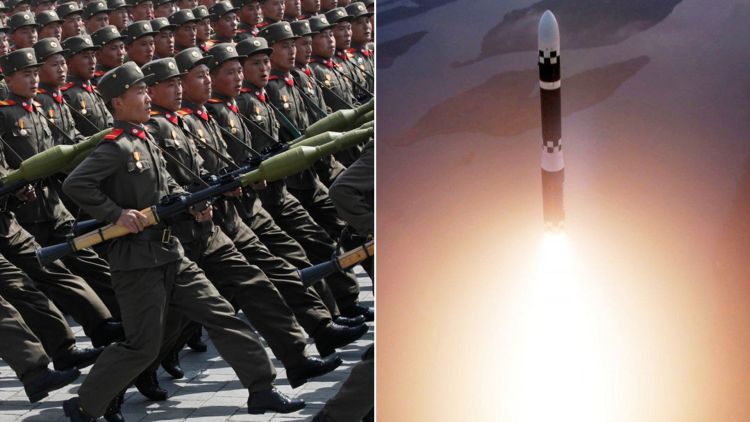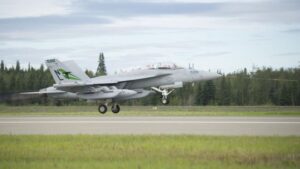Kick off your morning with the latest intel: top defense and global affairs insights to keep you informed this Friday, November 1.
North Korea Continues to Partake in Russia’s War Effort
The Biden administration reported Thursday that around 8,000 North Korean soldiers have arrived in Russia near Ukraine’s border, likely gearing up to support Russian forces in the ongoing conflict. This is a big jump from earlier estimates, and it’s causing serious concern worldwide about what North Korea’s involvement could mean for the future of the war.
The troops are reportedly trained in artillery, drones, and trench warfare, signaling they’ll likely see frontline action soon, though Defense Secretary Lloyd Austin doesn’t believe they’ll make a major difference in turning the tide, given Russia’s already high losses.
South Korea has strongly condemned the move, calling for an immediate withdrawal, and Austin pointed to China, urging it to step in and question Russia’s plans, as this development could add more instability in Asia as well as Europe.
Just to add to the tension, North Korea recently test-launched an intercontinental ballistic missile (ICBM) ‘Hwasong-19,’ possibly with some Russian assistance, which hasn’t gone unnoticed by the US, South Korea, and Japan.
Beyond just troops, North Korea’s been sending munitions to Russia too, with the White House even releasing images of 1,000 containers of military gear headed over.
The situation was tense at the United Nations, where US officials questioned Russia’s stance on hosting North Korean forces, a point that Russia’s representative chose not to address.
Kick off your morning with the latest intel: top defense and global affairs insights to keep you informed this Friday, November 1.
North Korea Continues to Partake in Russia’s War Effort
The Biden administration reported Thursday that around 8,000 North Korean soldiers have arrived in Russia near Ukraine’s border, likely gearing up to support Russian forces in the ongoing conflict. This is a big jump from earlier estimates, and it’s causing serious concern worldwide about what North Korea’s involvement could mean for the future of the war.
The troops are reportedly trained in artillery, drones, and trench warfare, signaling they’ll likely see frontline action soon, though Defense Secretary Lloyd Austin doesn’t believe they’ll make a major difference in turning the tide, given Russia’s already high losses.
South Korea has strongly condemned the move, calling for an immediate withdrawal, and Austin pointed to China, urging it to step in and question Russia’s plans, as this development could add more instability in Asia as well as Europe.
Just to add to the tension, North Korea recently test-launched an intercontinental ballistic missile (ICBM) ‘Hwasong-19,’ possibly with some Russian assistance, which hasn’t gone unnoticed by the US, South Korea, and Japan.
Beyond just troops, North Korea’s been sending munitions to Russia too, with the White House even releasing images of 1,000 containers of military gear headed over.
The situation was tense at the United Nations, where US officials questioned Russia’s stance on hosting North Korean forces, a point that Russia’s representative chose not to address.
Ukraine Wants Missile Restrictions Gone
Ukraine’s Foreign Minister Andrii Sybiha is calling on Western countries to “lift all the restrictions” and let Ukraine use long-range missiles against Russia, especially after reports of thousands of North Korean troops moving to Russia’s border with Ukraine.
Speaking at a peace conference in Montreal, Sybiha called the deployment a serious escalation and argued that Ukraine has every right to strike Russian military targets in self-defense.
Norway’s Foreign Minister Espen Eide backed him up, saying that Ukraine should be able to use these weapons as long as they’re aimed at military sites.
Canada and several European countries are also on board, agreeing that it’s time to reconsider the restrictions.
Russia’s Latest Grab: Another Village Falls in Eastern Ukraine
Russia’s defense ministry announced it captured another village in eastern Ukraine as its troops pushed through the Donetsk region.
For weeks, Russian forces have been making steady progress, taking numerous towns and villages as they move closer to the industrial town of Kurakhove and the logistics hub of Pokrovsk.

This latest gain is the village of Yasnaya Polyana, a small settlement with fewer than 500 residents, located about 14 miles southwest of Kurakhove.
Israeli Strikes Cripple Hezbollah’s Syrian Supply Network
Ten people, mostly civilians, were killed in airstrikes on Syria’s Al-Qusayr region near the Lebanese border, with Israel targeting Hezbollah weapons depots, according to the Syrian Observatory for Human Rights.
Three strikes hit Al-Qusayr, a Hezbollah stronghold, and nearby areas, including a weapons depot and fuel storage site, killing seven civilians and three fighters linked to Hezbollah.
Israel’s military stated the strikes aimed to disrupt Hezbollah’s weapon supply chain from Iran through Syria to Lebanon.
The strikes also damaged warehouses, a bridge, and residential areas, putting key border crossings out of service.
The Israel-Syria border has seen increased tensions as Israel targets Hezbollah’s supply routes amidst the ongoing conflict.
China’s Aircraft Carriers Team Up in the South China Sea
For the first time, China’s two aircraft carriers, CNS Liaoning and CNS Shandong, drilled together in the South China Sea, showcasing a growing capability within the People’s Liberation Army Navy (PLAN).
The exercise, featuring a formation of J-15 fighters and 11 accompanying ships, aims to boost the PLAN’s combat readiness as part of its annual training.
Despite Shandong’s 2019 commission, this joint exercise was likely delayed as China took a phased approach to develop its carriers’ capabilities.
Liaoning recently completed a refurbishment, making it ready for dual-carrier ops, a strategy typically used by countries like the US and its allies. This joint exercise highlights China’s focus on enhancing carrier operations independently, as the country doesn’t partner with other dual-carrier navies.
The US and NATO allies have also been active with dual-carrier operations recently, with the Abraham Lincoln drilling alongside Italy’s Cavour and the Harry S. Truman joining the United Kingdom in NATO exercises in the North Sea.
US Navy’s Arleigh Burke-Class Ships Get Service Extensions
The US Navy announced Thursday it’s extending the service lives of 12 Arleigh Burke-class destroyers by one to five years, giving these ships an additional 48 ship-years in total.
This decision, based on each ship’s condition, capability, and maintenance needs, comes with an estimated cost of $1.3 billion through the FY26 budget and $6 billion over the next 15 years.
Notably, the USS Barry and USS The Sullivans will each get three-year extensions, while most others, like USS Cole and USS John Paul Jones, will get five-year extensions.

The Navy’s plan to keep these ships longer aims to maintain fleet strength while balancing the budget for newer programs, including a next-gen destroyer (DDG(X)) set to begin construction in 2032.
Finland Tracks Tanker Spoofing in the Baltic
Finland’s Coast Guard reports ongoing disruptions to satellite navigation signals in the Baltic Sea, pointing to Russia as the likely culprit.
Since April, these disturbances have led to ships losing their course in the Gulf of Finland, causing potential navigation hazards.
Recently, Finland observed tankers spoofing their location data to mask visits to Russian ports, which officials believe is an attempt to evade Western sanctions on Russian oil.
The Coast Guard suspects Russia is jamming signals to shield its oil ports from possible Ukrainian strikes.
Additionally, Finland is keeping an eye on the “shadow fleet”—aging tankers transporting Russian oil.
With winter’s dark and icy conditions on the way, there’s concern these navigation issues could lead to environmental risks in the fragile Baltic Sea ecosystem.



